
Jordão剧院与Garage Avenida改造
Rehabilitation of the old Jordão Theater and Garage Avenida / Pitagoras Group
由专筑网小R编译
Jordão剧院的下部楼层包含有Jordão餐厅,它建造于上世纪30年代,其功能和电影院类似,这在全国都有着很多不同的案例,这使得当时存在的旅行公司都够进行演出,并且给电影提供了展示空间,在早期的城市环境中融入了现代特征。
Text description provided by the architects. Teatro Jordão, - this is how we name the well-known building that during its lifetime also housed the "Restaurante Jordão" (Restaurant) on the lower floor, was built in the 30s and corresponds programmatically to the typical Cine-teatros (Cinema Theatre) program, of which there are many and varied examples throughout the country, making it possible for the traveling companies that existed at the time to perform plays, providing above all the space for cinema, introducing one of the items of "modernity" in very incipient urban contexts.
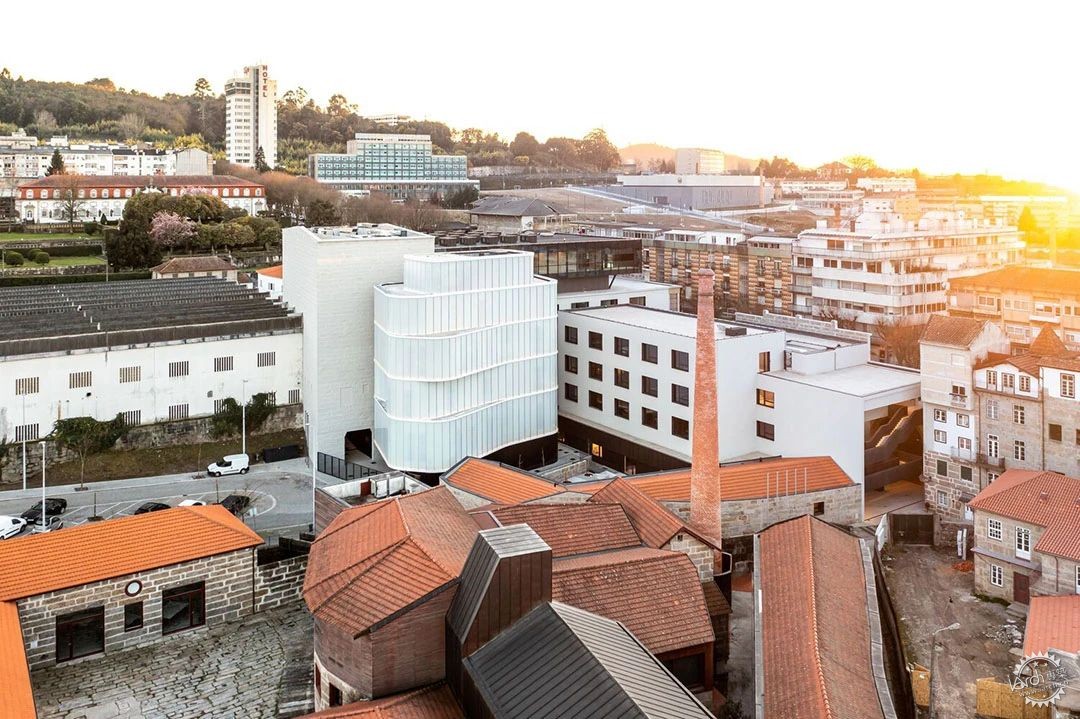
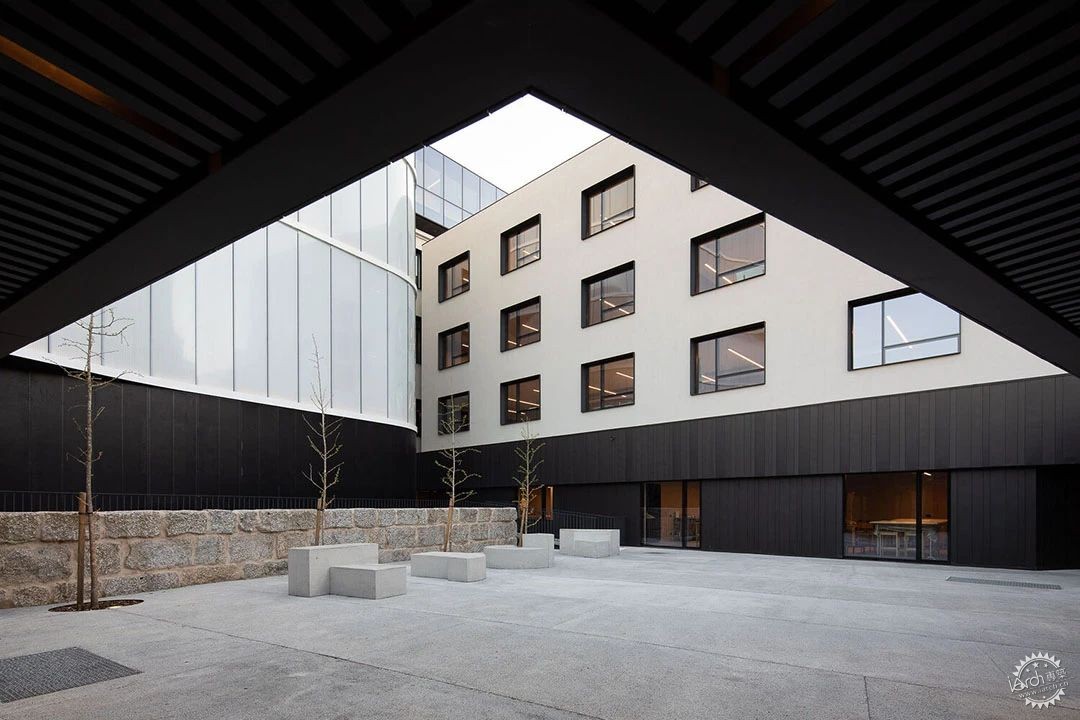
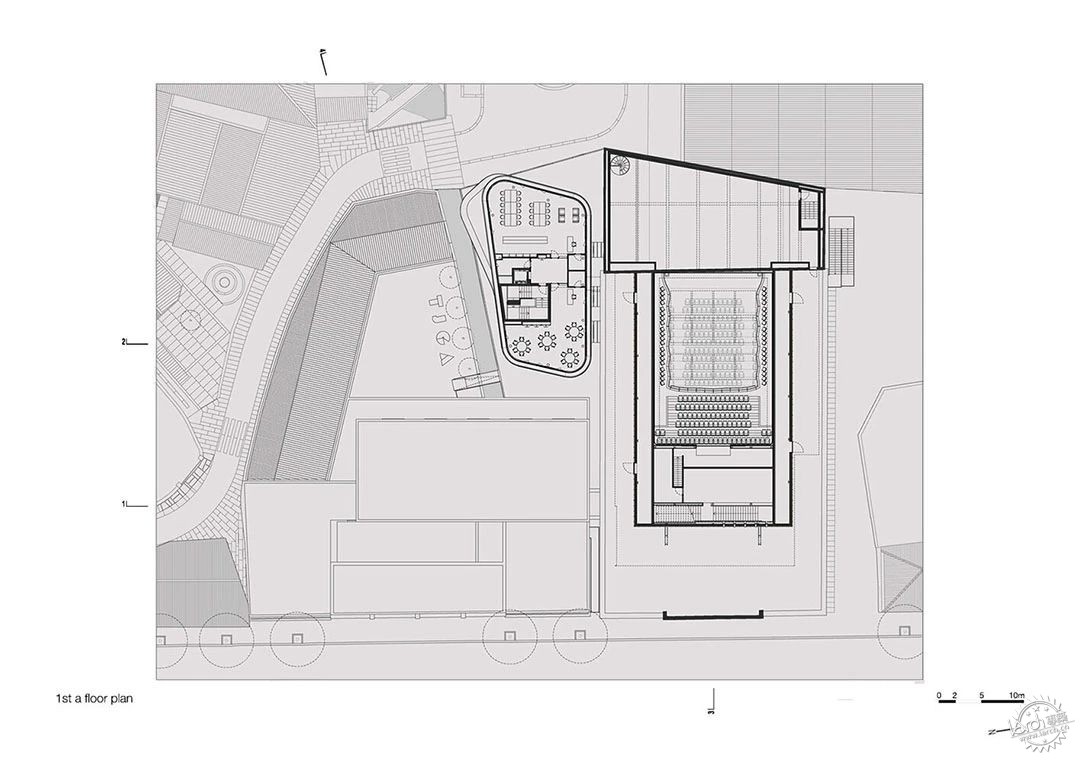

在这座建筑中,其功能与另一种内容相联系,这代表了象征意义,保持了原有的特点,建筑的记忆展示于建筑功能及其相关价值之中,长久以来其功能有所减少,比如电影院和餐厅都关闭了,建筑的应用也逐步减少,但是朝向Avenida D. Afonso Henriques一侧的建筑立面的体量和现代特征则成为了场地中的唯一客观记忆,仍然保留了建筑的第三参考意义,从形式上和体量上都使得各个元素都包含有全新的独立性,这种物理与真实的记忆也可以理解为是对于遗产的保护。
Thus, in this building, its explicit function is associated with another content, of a symbolic character that has acquired and maintained primordial importance. The memory of the building materializes in this dichotomy between the functionality of the building and its associated values. Its function was lost over time - the cinema was deactivated and the restaurant was closed - and the construction degraded, but the volume and modernity image translated in the façades facing Avenida D. Afonso Henriques constitute today the only objective memory of the whole set. This memory, a granite and opaque construction, should remain as the project's third reference, formally and volumetrically making all the elements that constitute new intervention autonomous. This physical and real memory understood as heritage to be preserved should remain so.
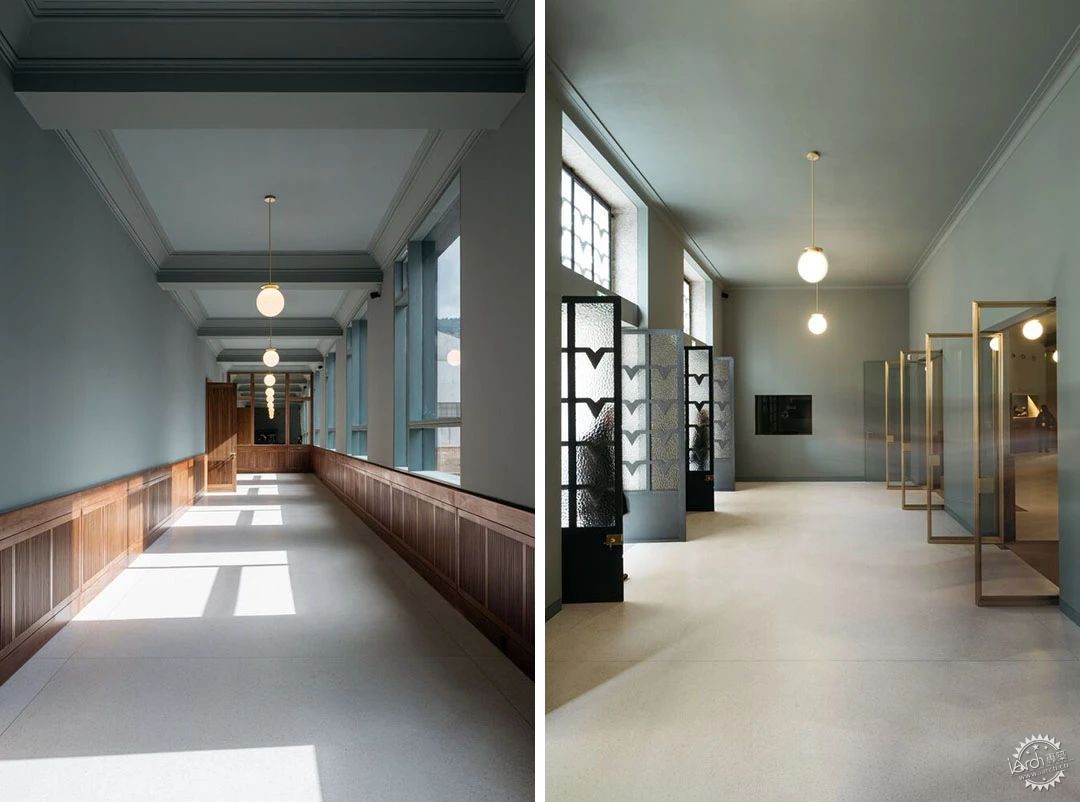
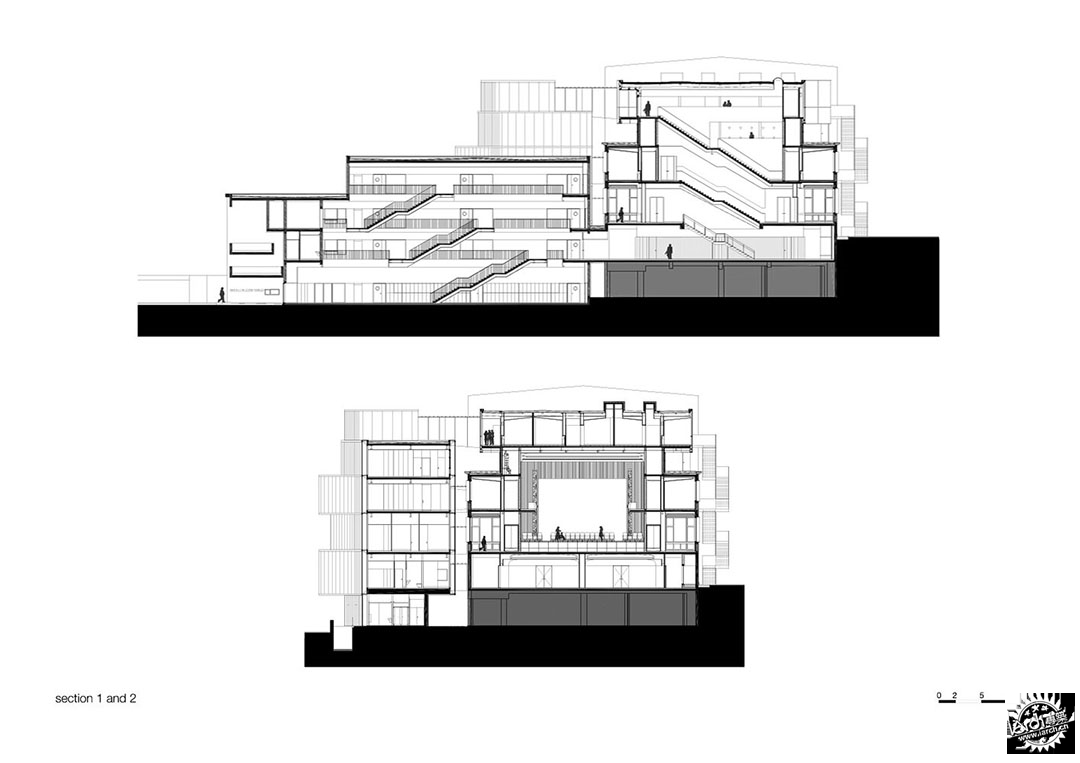
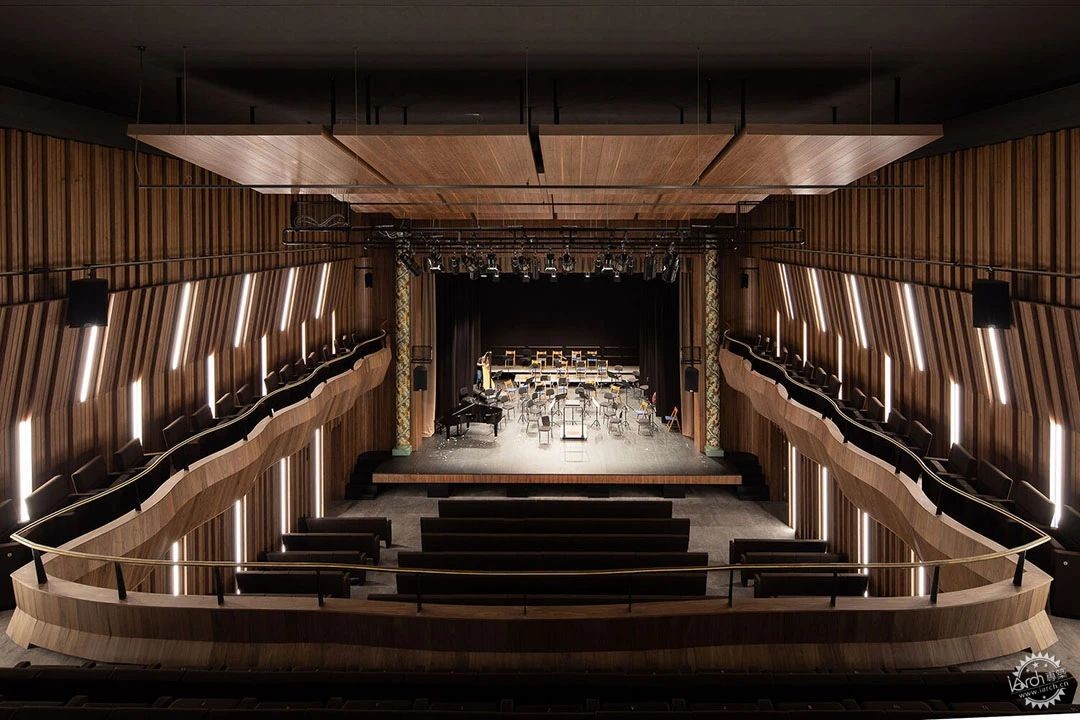

遗产保护和其中广义上的功能理解相关,建筑的功能转变就意味着需要进行改造,除此之外,该项目还包含了“Auto Garagem Avenida”大楼的改造再利用,同时将其转变为主要立面,这是装饰艺术美学的最佳案例。
The preservation of heritage is connected to a criterion of utility understood here in its broadest sense, accepting that the functional conversion of the building implies its transformation. In addition, the program also includes the rehabilitation of the "Auto Garagem Avenida" building, from the same time, and which translates into its main façade, one of the best examples of an Art Deco aesthetic built in Guimarães.
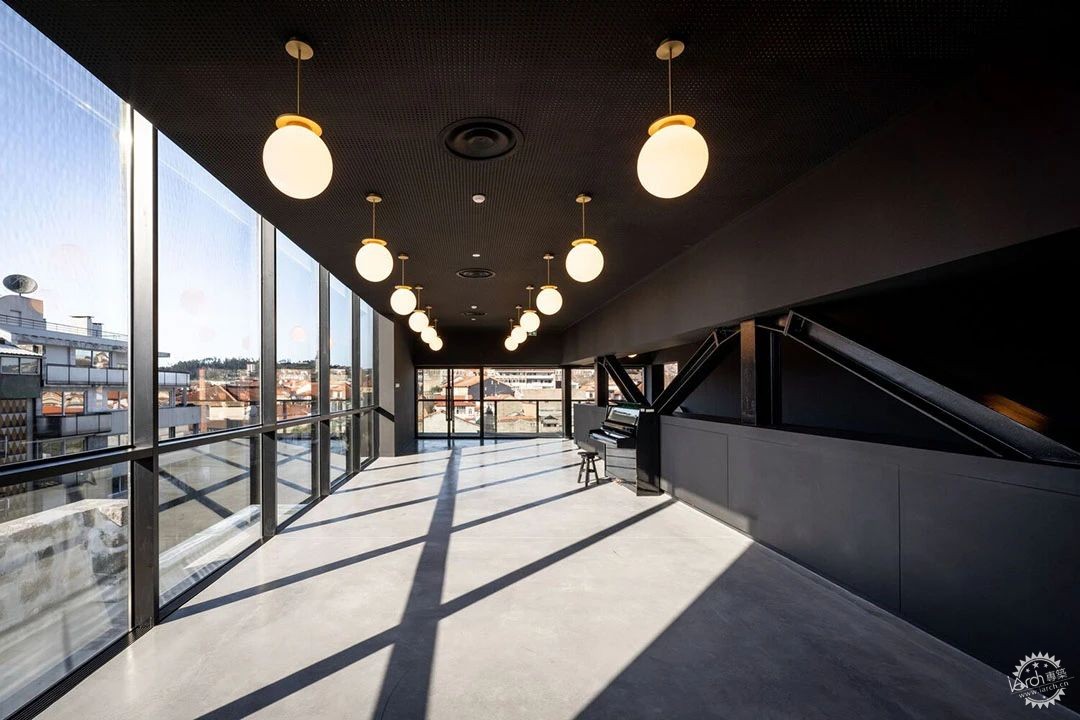
规划中的新功能,比如表演艺术学校、视觉艺术学校、音乐学校,以及礼堂,它们都来源于Jordão剧院的空间改造,通过几个类似但却独立的活动空间得以划分,这给新建筑起到了决定性的作用,独立的礼堂功能和主要的音乐学校、表演艺术学校,以及视觉艺术学校相互呼应,保证了功能的独立性,同时也能够举办外部活动,可以用于舞蹈、音乐、会议的礼堂是一个多功能空间,在这里能够进行多项活动。
The proposed new program, School of Performing Arts, School of Visual Arts, School of Music and Auditorium resulting from the reconversion of the Teatro Jordão room, divided by several autonomous entities with similar but independent activities, was decisive for the new drawing of the building. The autonomous and independent Auditorium functionally complements the major valences, music school, the performing arts school and the visual arts school, ensuring the independent operation that can host external and diverse activities. The auditorium (intended for dance, music and congresses, etc.) was designed as a multifunctional room, allowing its reconfiguration and adaptation to the various proposed events.
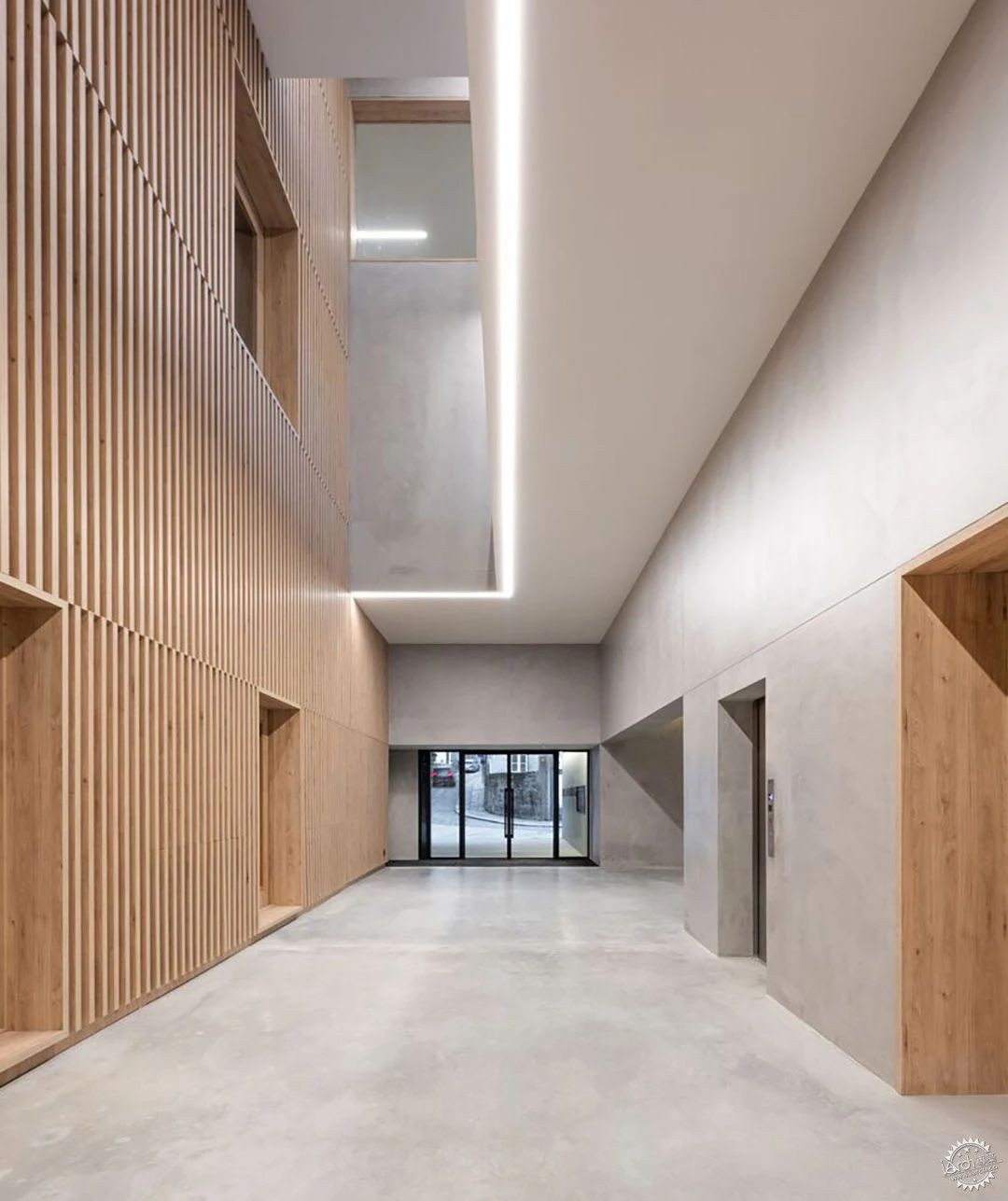
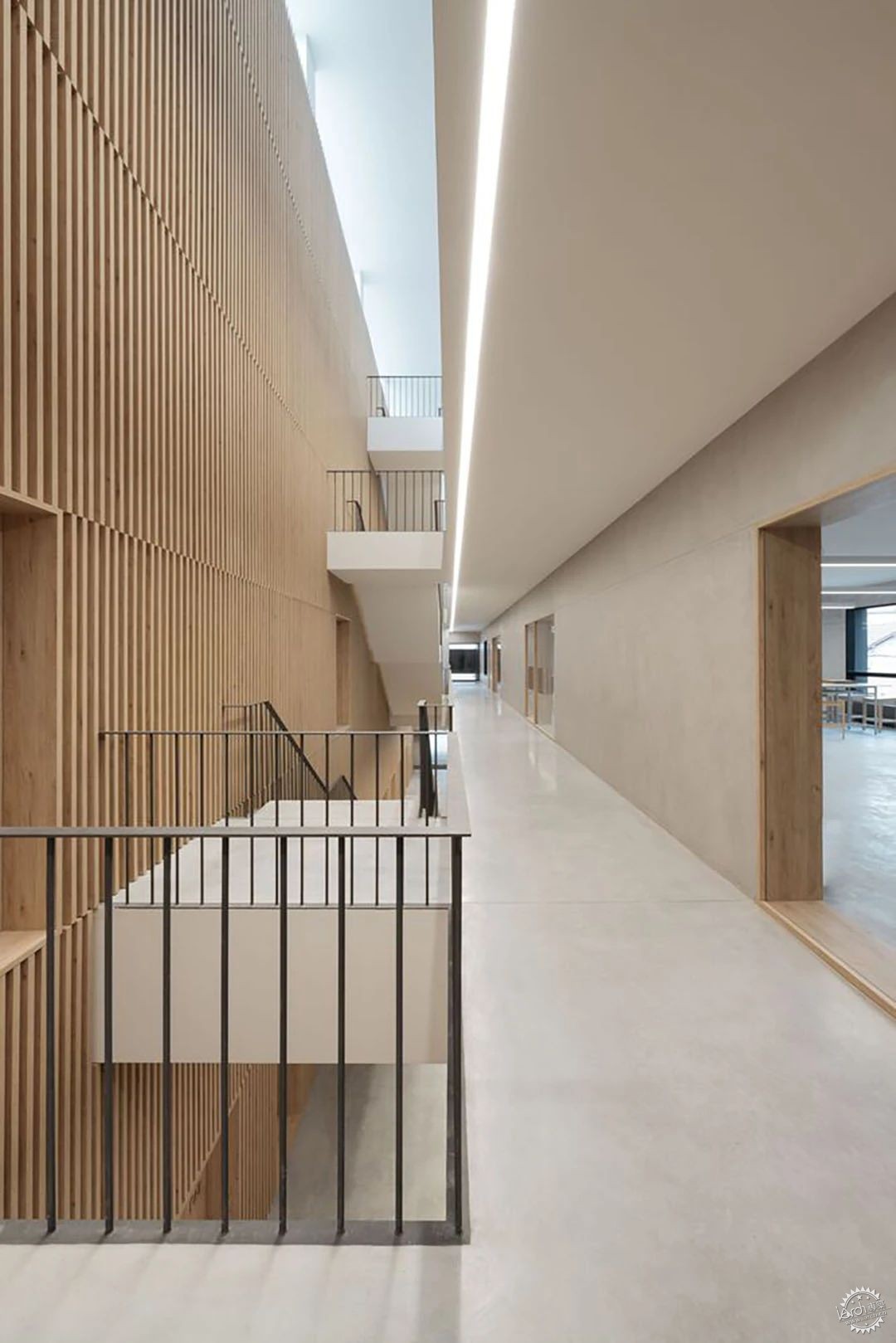
项目场地与城市对于这些建筑遗产的理解都具有一定的主观特征,而经过持续验证的遗产恢复和保护政策也意味着是一项呼应干预背景的持续比较。
Any understanding of the heritage of these buildings, this site and this city carries an interpretative, personal and subjective burden. Likewise, a heritage recovery and safeguard policy, even validated by consistent and continuous practice, means an option that must be constantly compared by the context of each intervention.
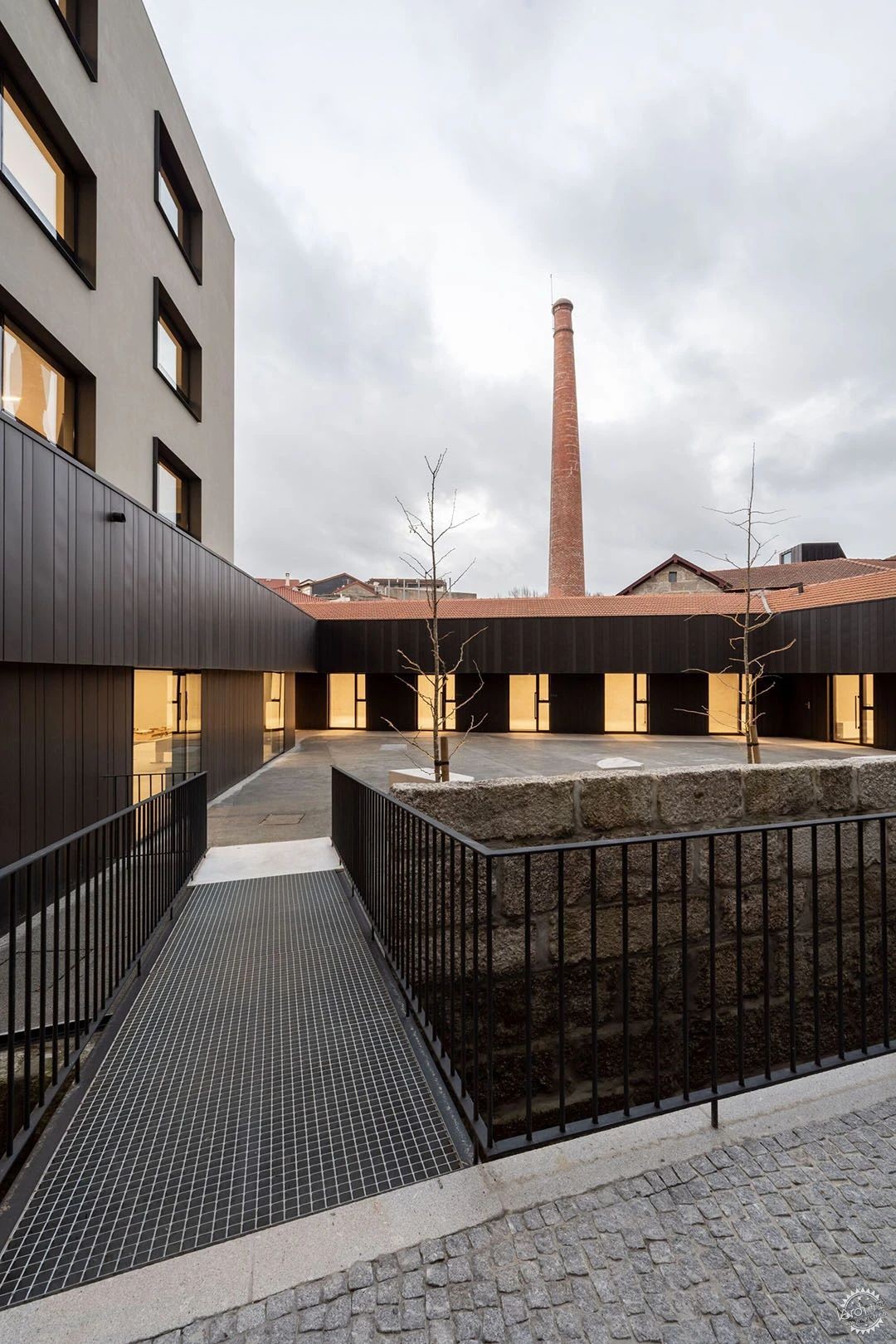
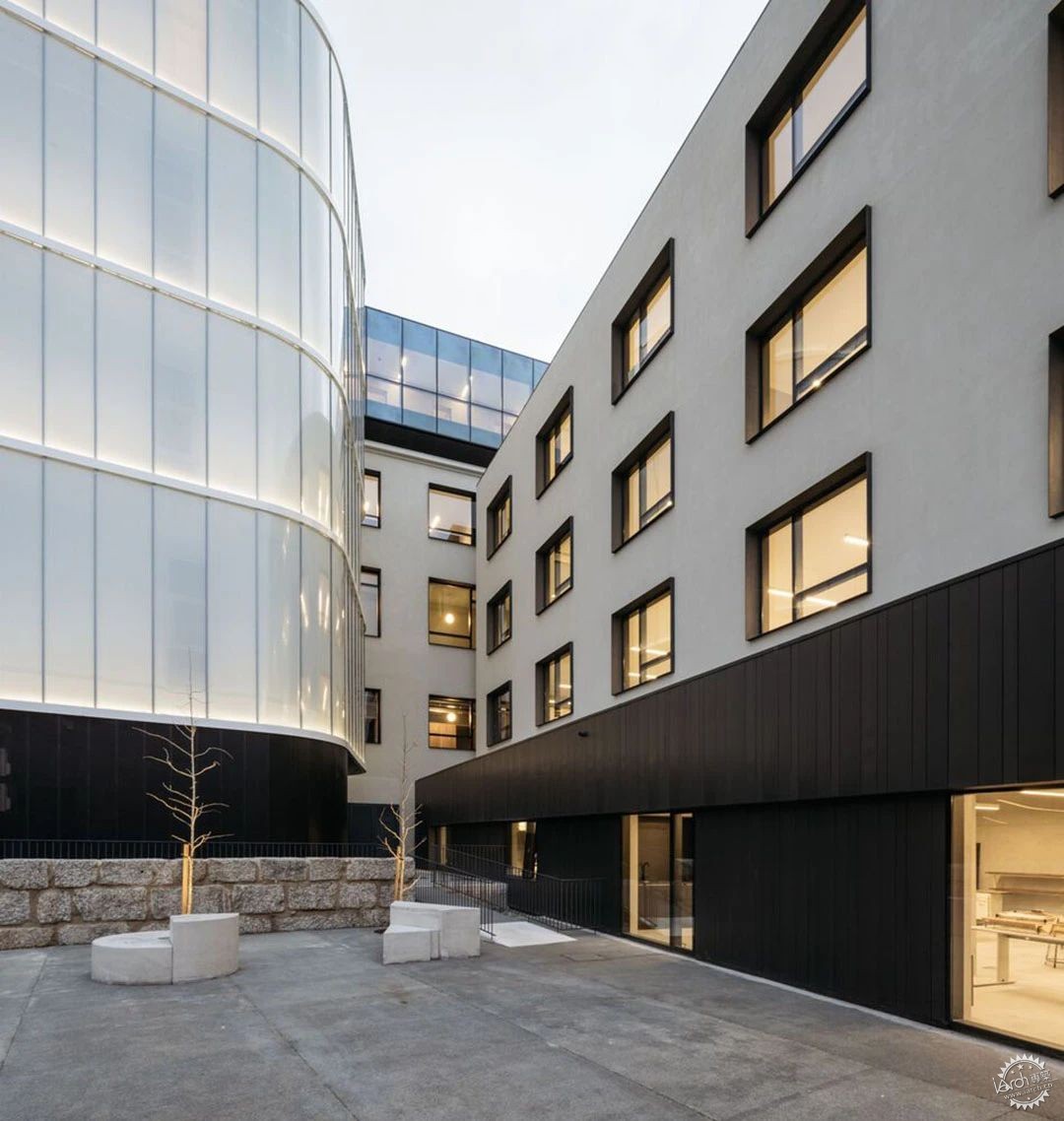
该项目的最终目标是遗产保护,并且结合于修复与改造的范畴之中,而不仅仅只是依赖于Jordão剧院和Auto Garagem Avenida大楼的物理与建筑现实的整合逻辑,改造必不可少,因此需要让建筑的功能更加贴近Couros地区的相关发展,当说到修复与改造的时候,人们主要首选修复与更新,而后是改造。
The ultimate goal of the project is the preservation of a heritage, and intends to place it within the scope of rehabilitation and conversion, not with a logic of integral preservation of the physical and architectural reality of the Teatro Jordão and the Auto Garagem Avenida buildings, but rather considers its transformation as inevitable, allocating to the building a program unequivocally and conceptually connected to that adopted for the Couros Area. And when we talk about rehabilitation and conversion, we talk about repairing and renewing in the first case and transforming in the second.
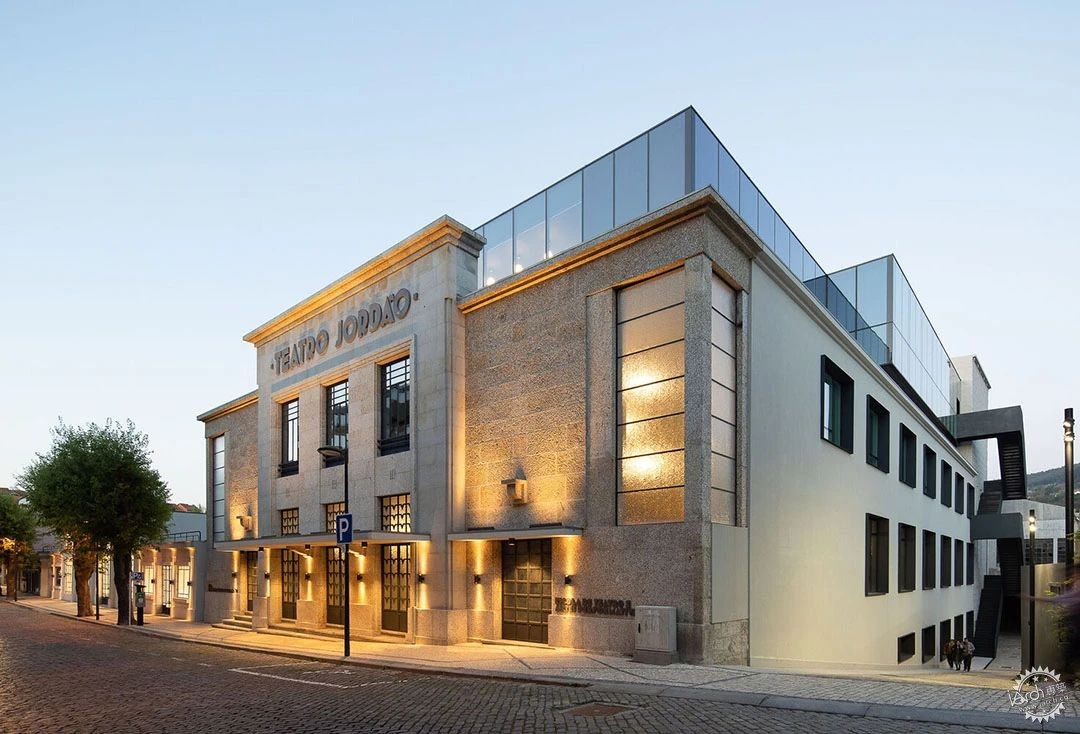
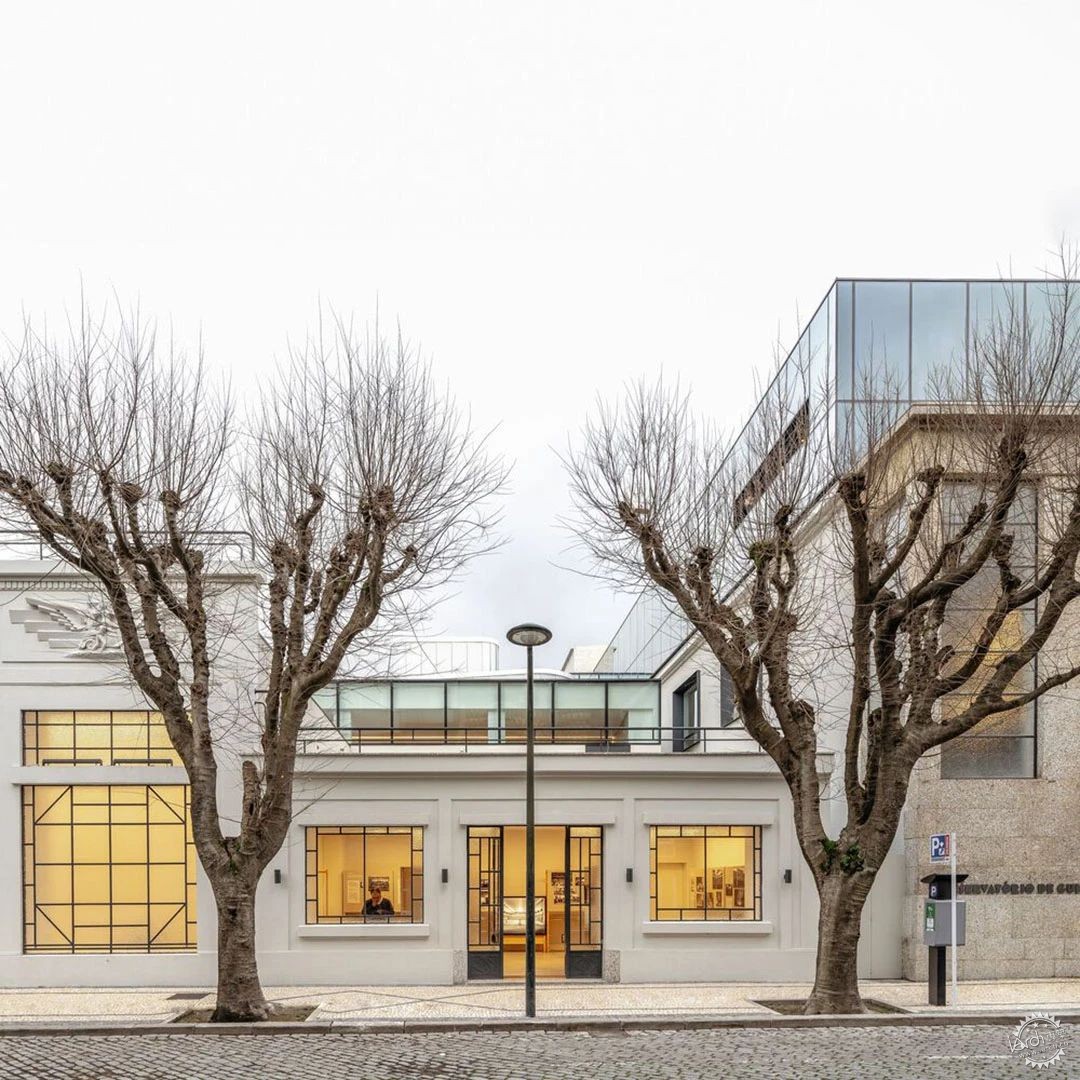

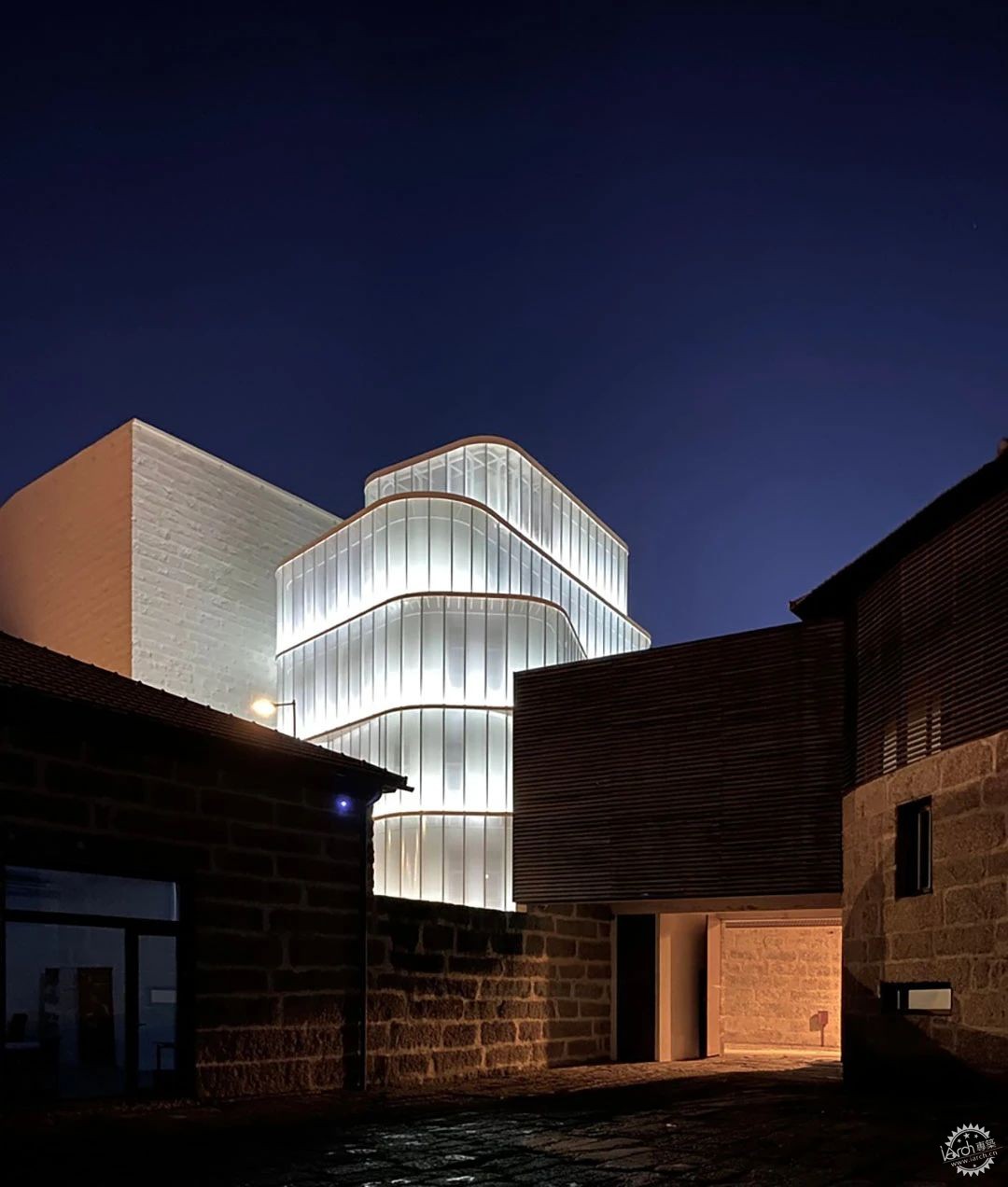


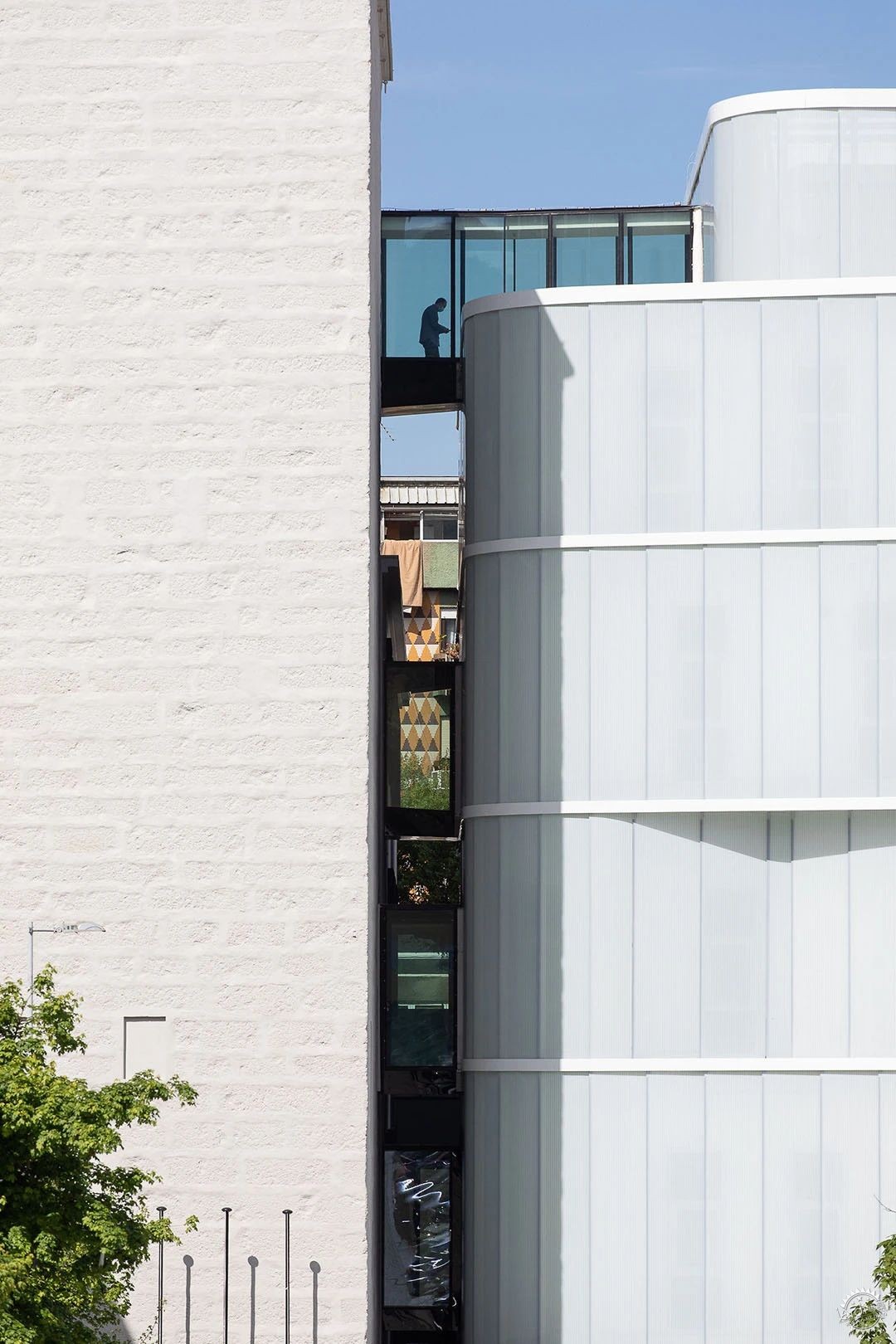
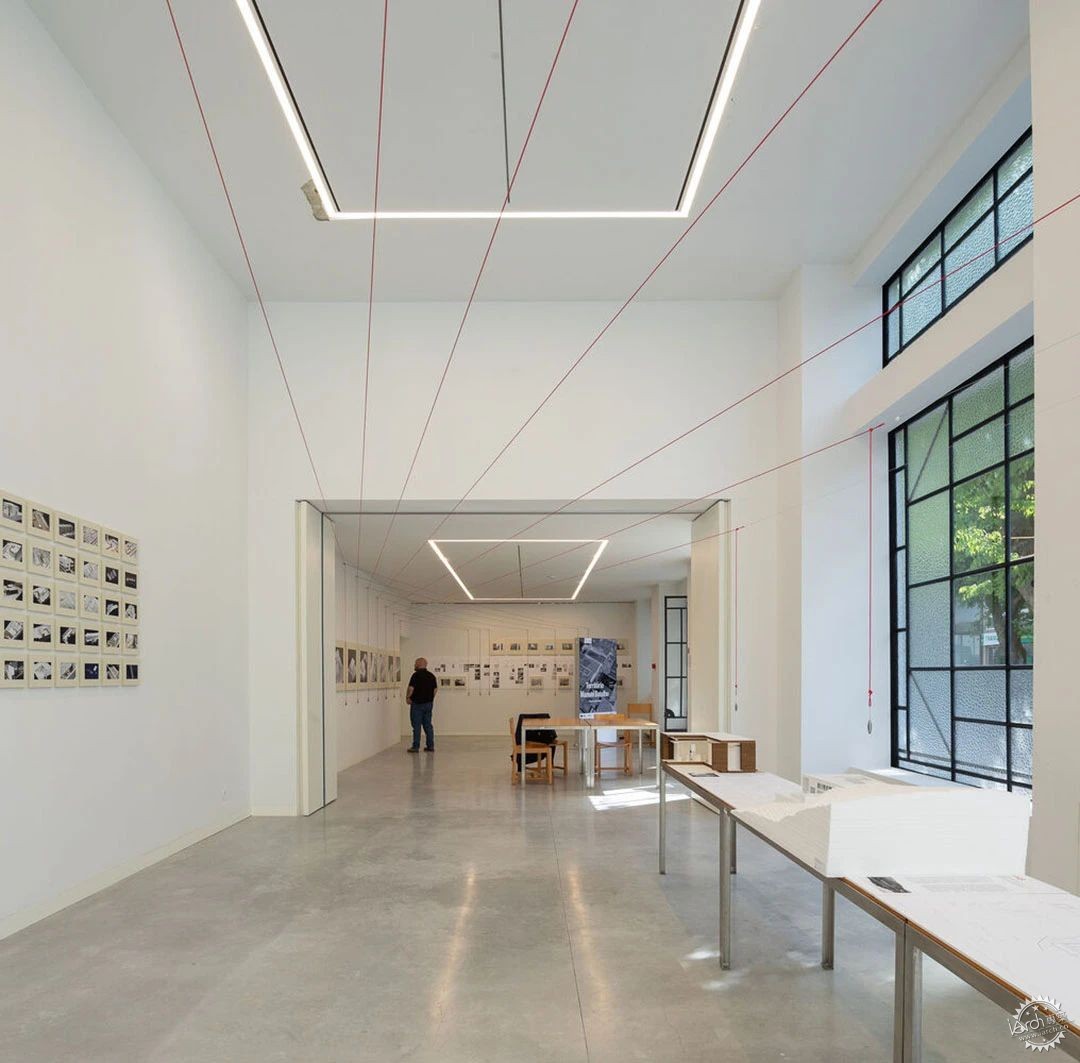
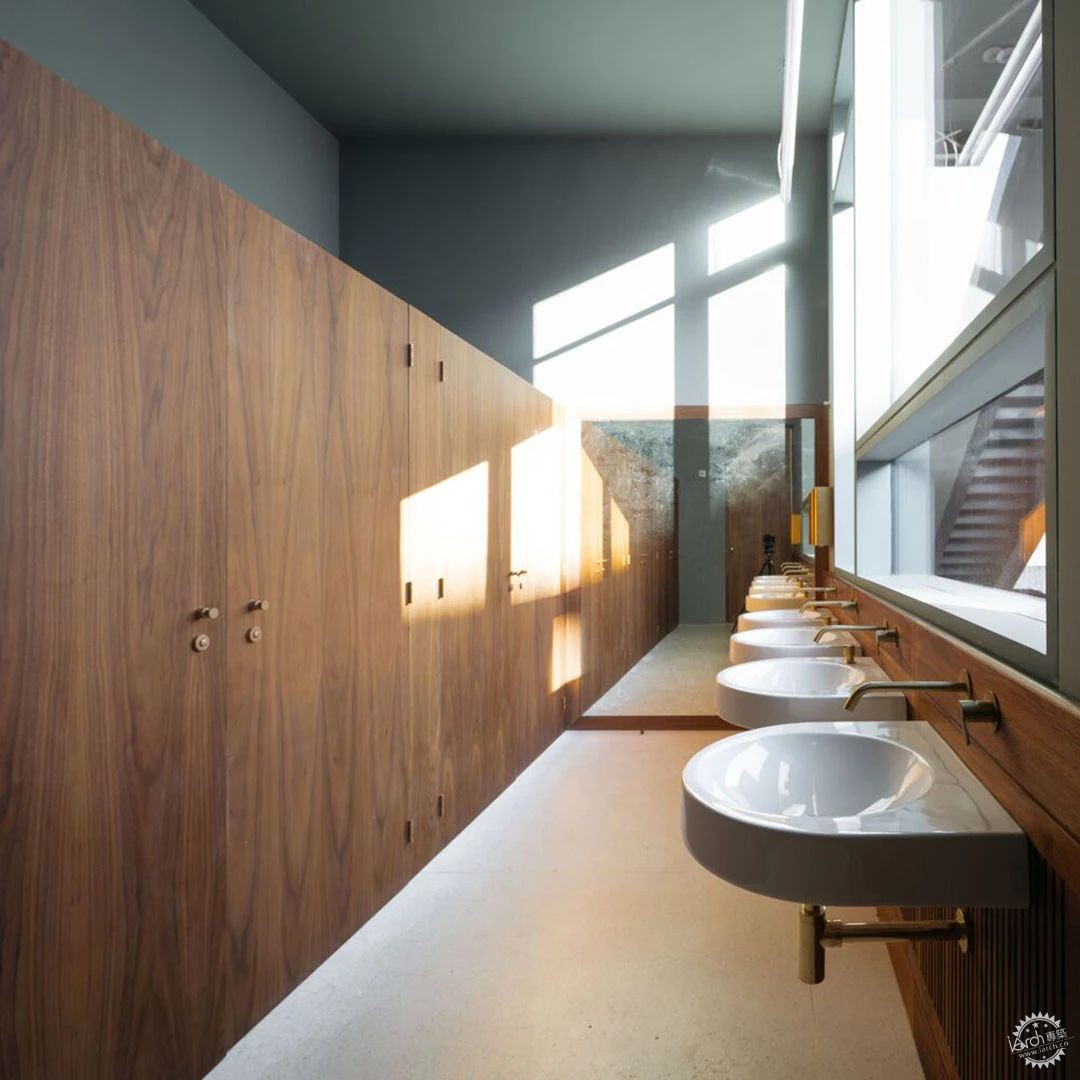
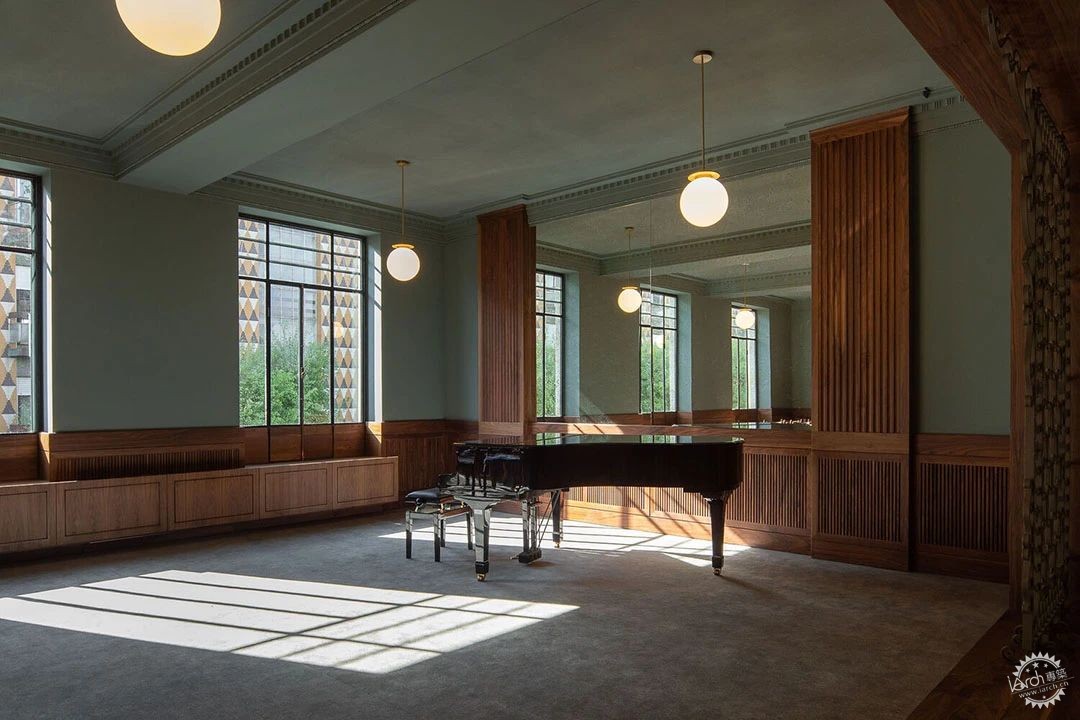
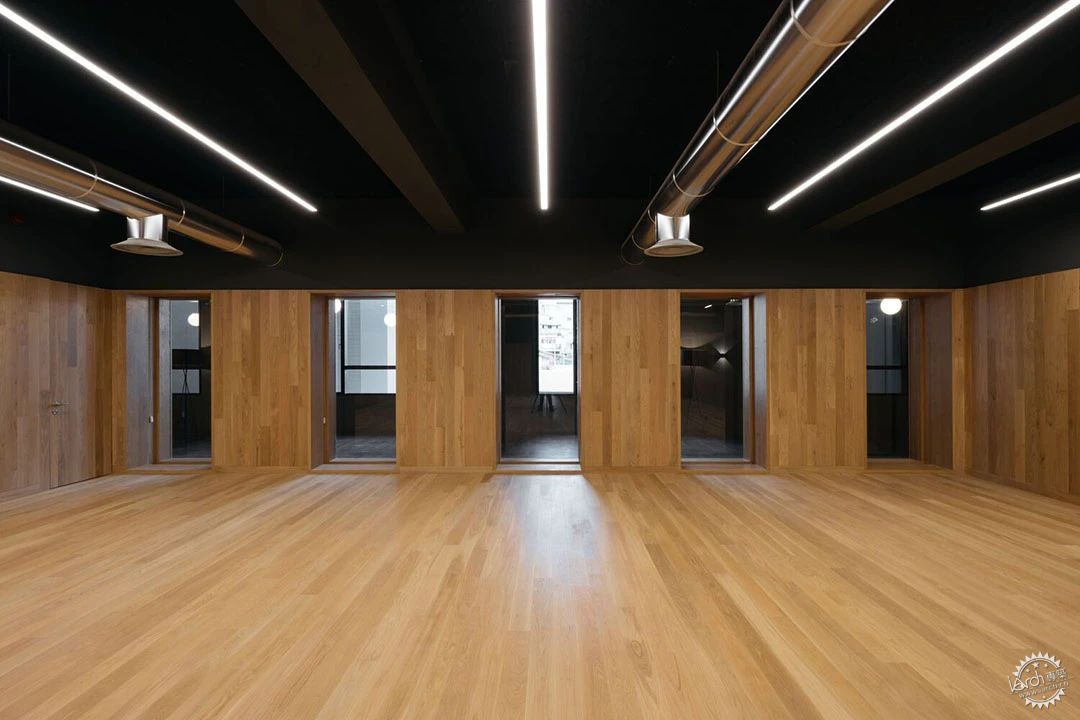
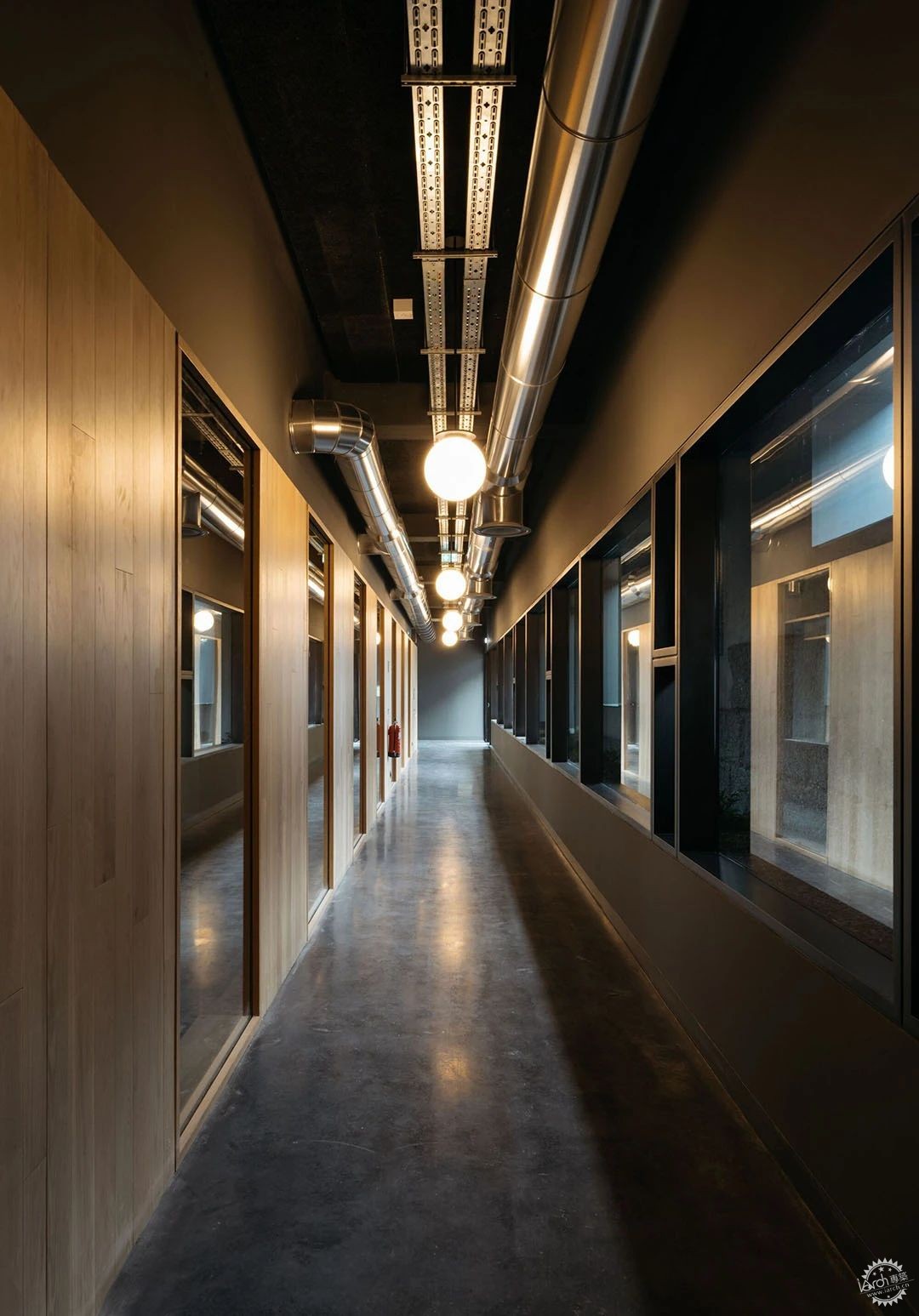

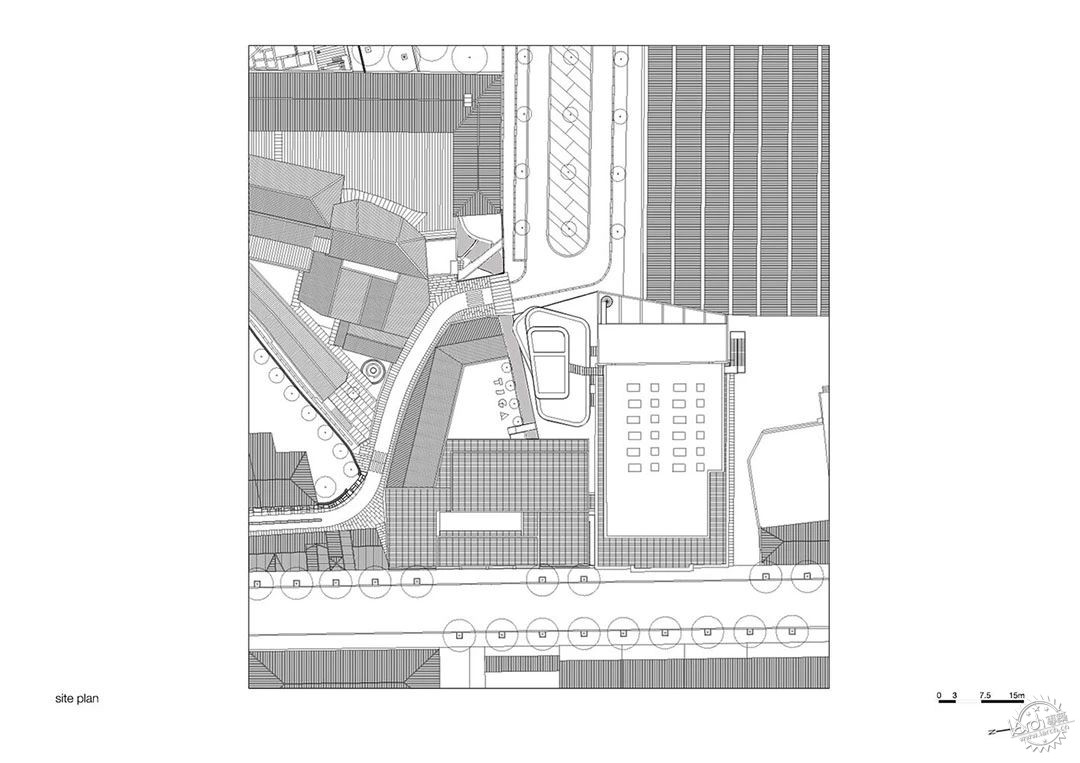

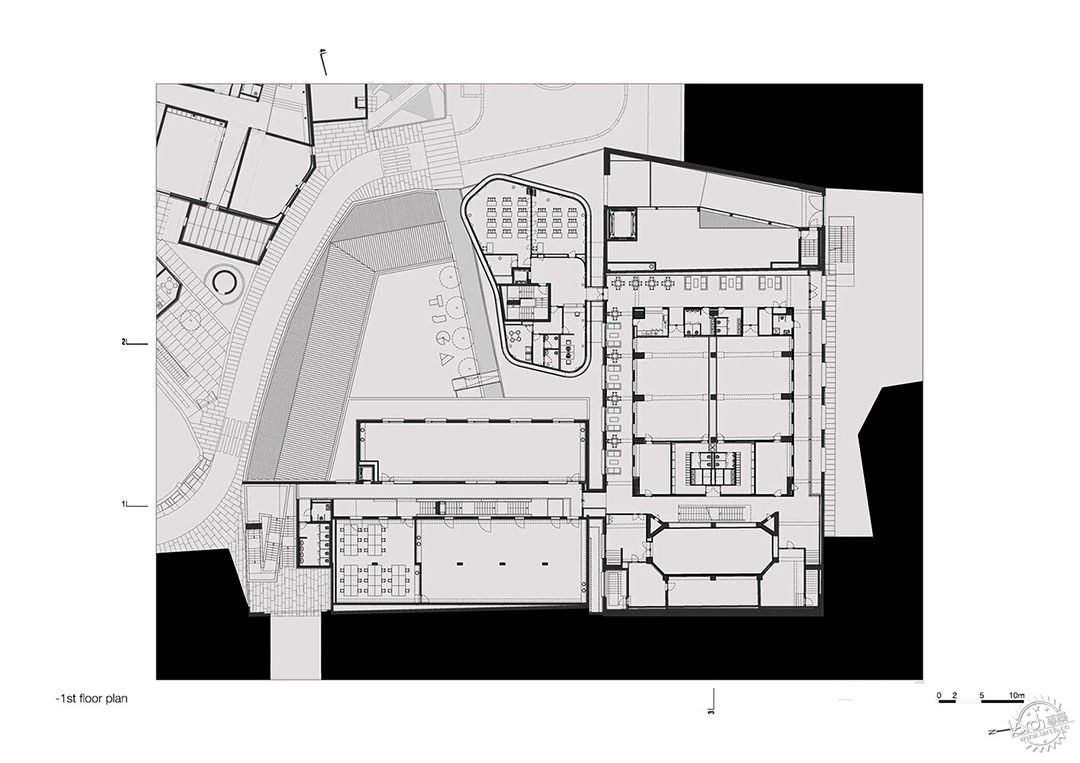
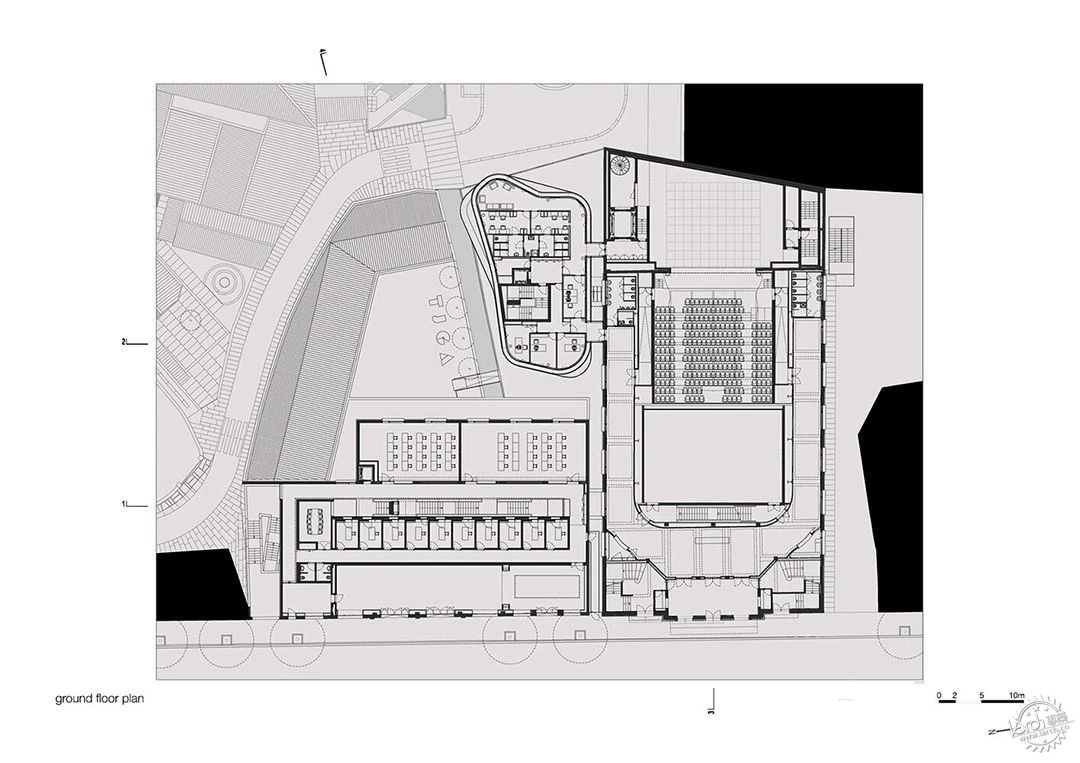
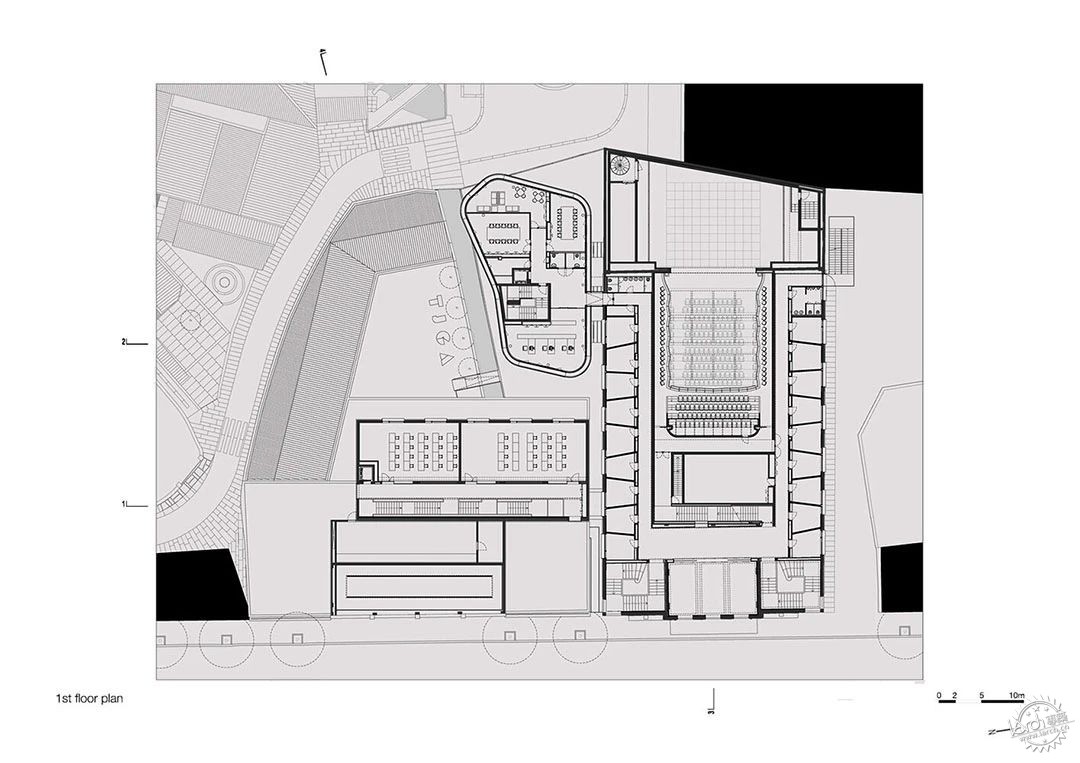
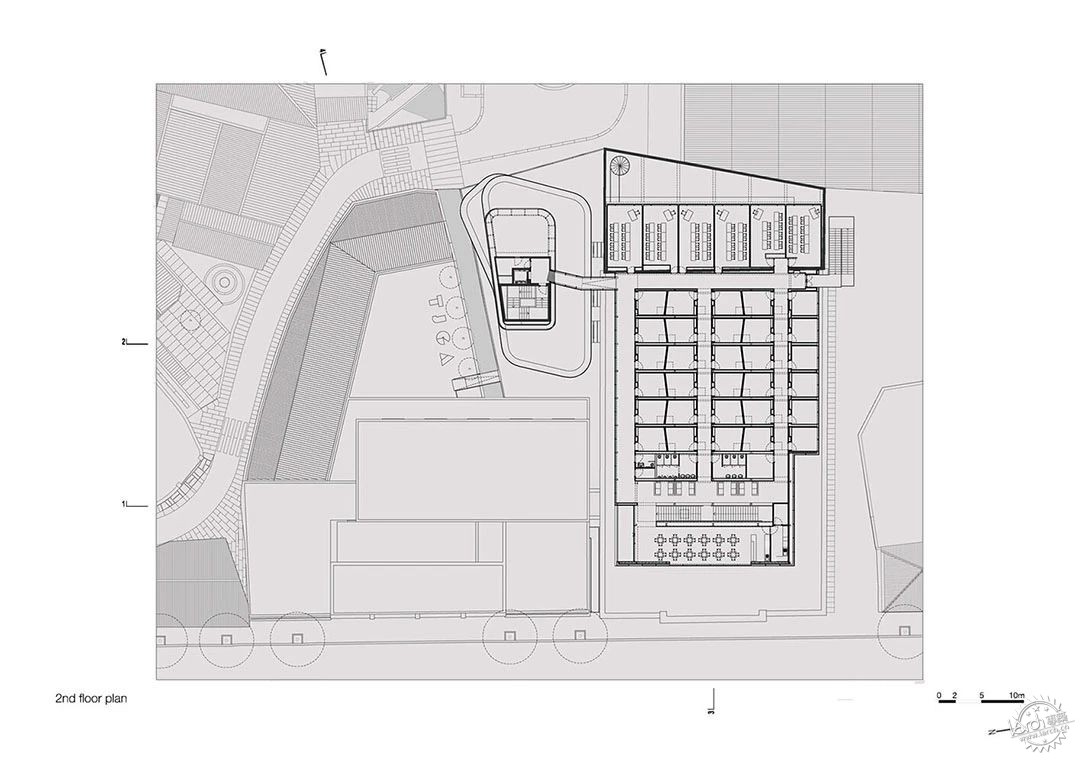
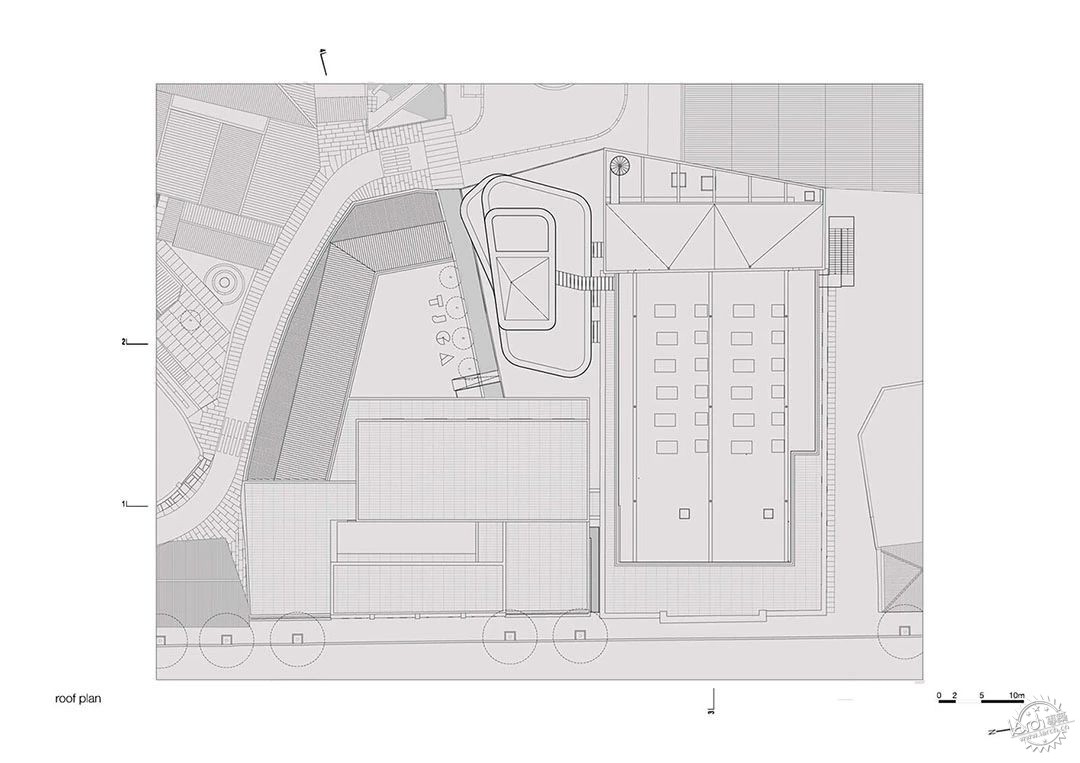
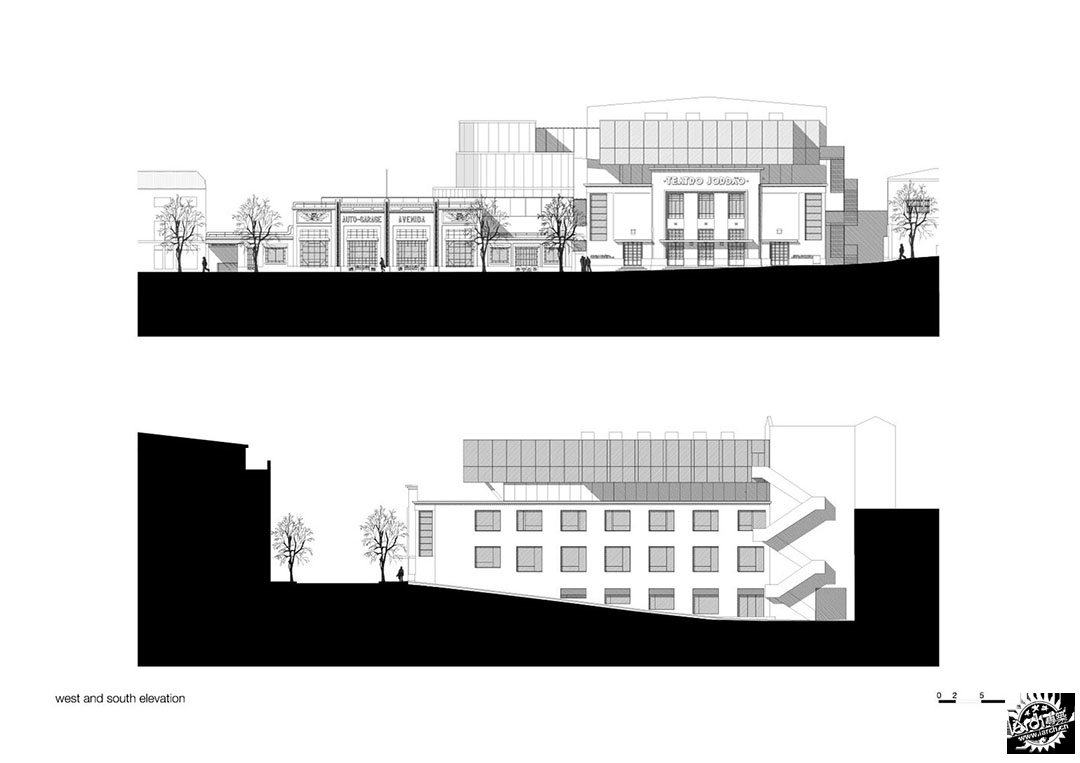
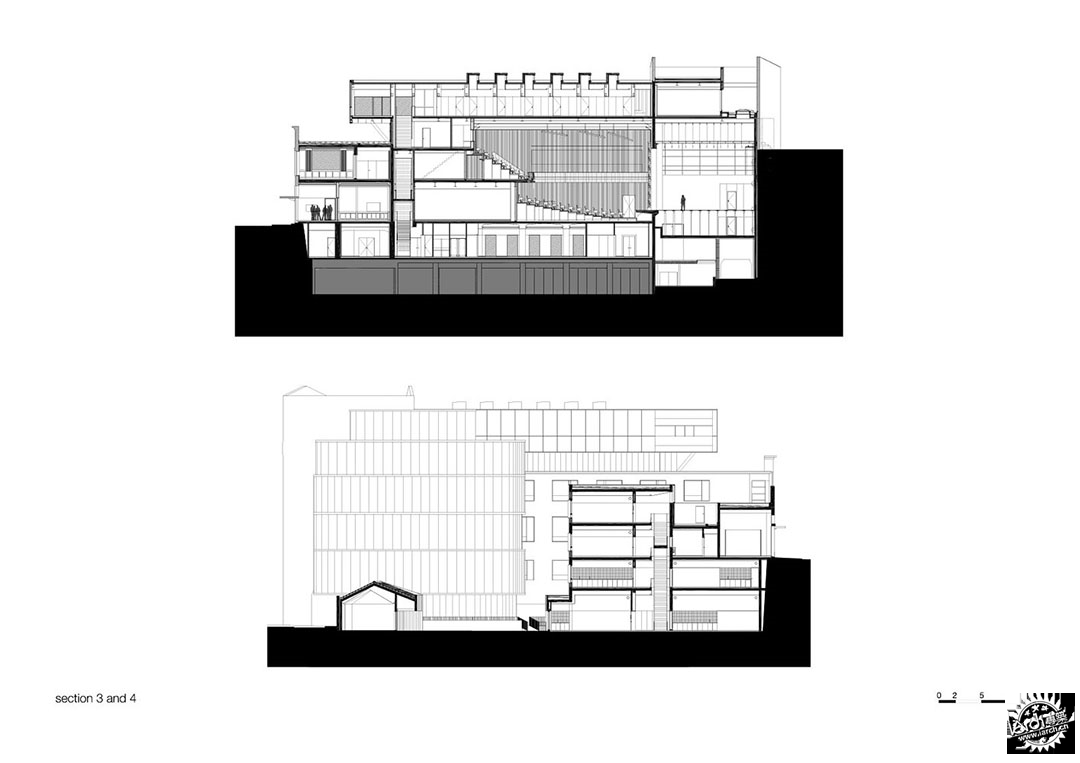


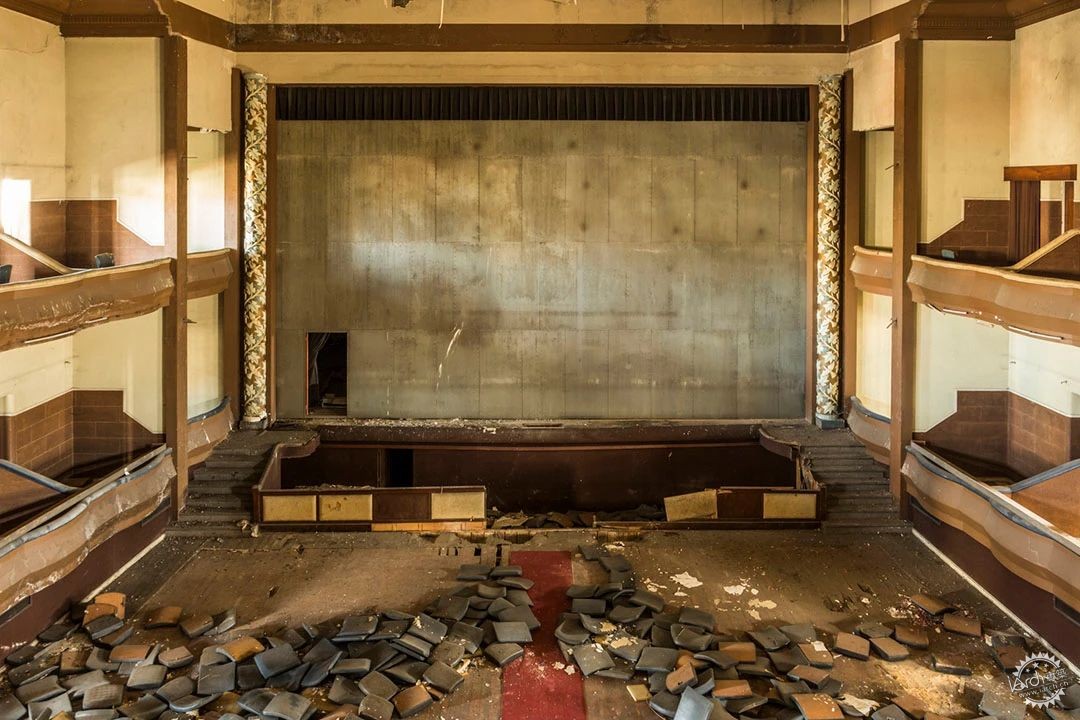
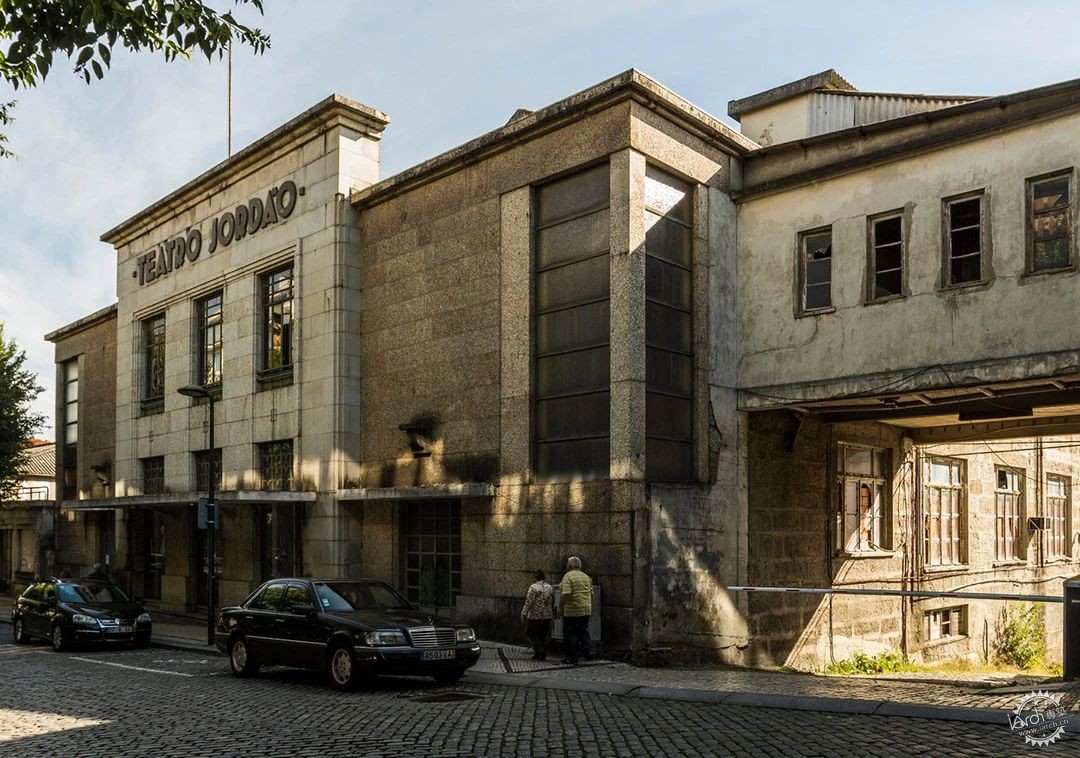
建筑设计:Pitagoras Group
类型:教育建筑 适应性改造
面积:11400 m2
时间:2022年
摄影:José Campos, João Rey, Manuel Roque
项目团队:Raul Roque Figueiredo, Alexandre Coelho Lima, Manuel Vilhena Roque
合作方:André Malheiro, Isabel Rodrigues, Tiago Ranhada, Hélio Pinto, João Couto, João Carvalho, Luís Guimarães, Gonçalo Vasconcelos
基础与结构:Projegui
水利安装:Projegui
机械安装:Layout
电力安装:Feris
声学设计:Vasco Peixoto de Freitas
视听设计:Ernesto Costa
城市:Guimarães
国家:葡萄牙
EDUCATIONAL ARCHITECTURE, ADAPTIVE REUSE
GUIMARÃES, PORTUGAL
Architects: Pitagoras Group
Area: 11400 m2
Year: 2022
Photographs: José Campos, João Rey, Manuel Roque
Project Team: Raul Roque Figueiredo, Alexandre Coelho Lima, Manuel Vilhena Roque
Collaborators: André Malheiro, Isabel Rodrigues, Tiago Ranhada, Hélio Pinto, João Couto, João Carvalho, Luís Guimarães, Gonçalo Vasconcelos
Foundations And Structure: Projegui
Hydraulic Installations: Projegui
Mechanical Installations: Layout
Electrical Installations: Feris
Acoustics: Vasco Peixoto de Freitas
Audiovisual Design: Ernesto Costa
City: Guimarães
Country: Portugal
|
|
